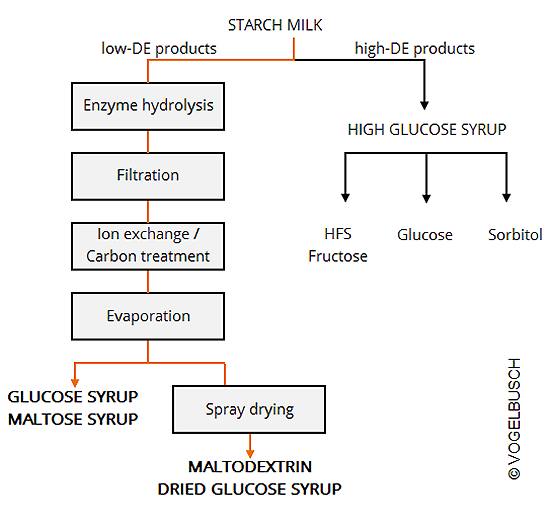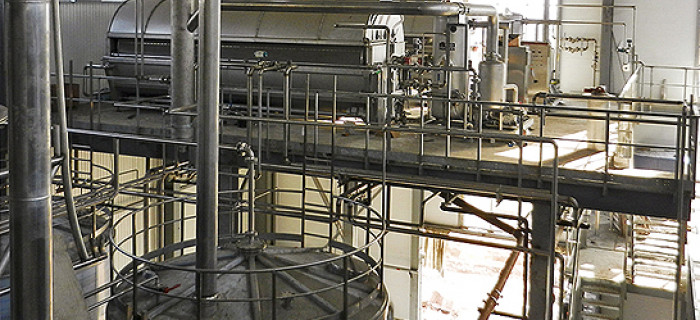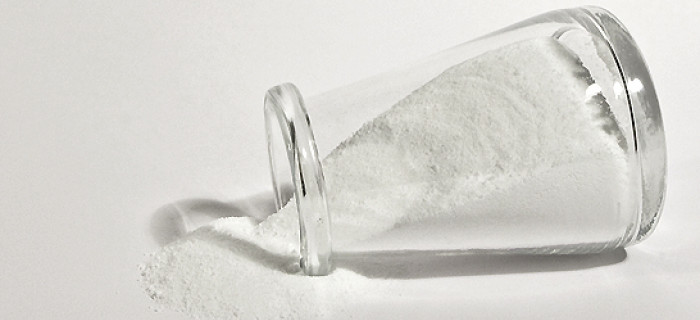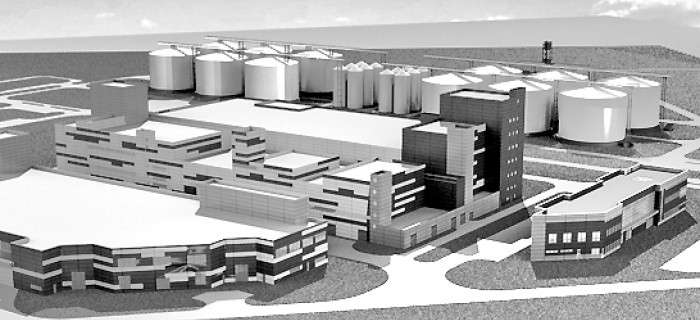Purification - 88
PRODUCT ISOLATION AND CONCENTRATION
The filtration process to separate suspended solids such as fibers and proteins depends on the product range of the plant.
Since syrups with DE values lower than 40 are highly viscous liquids, classical vacuum drum filters or sintered metal cross flow membranes may be chosen. For syrups with a DE value above 40 also polymer or ceramic cross flow membrane filtration are applied.
Deashing of the filtered solution is done in a pair of strong acidic and weak basic ion exchangers. Color bodies and foreign tastes are reduced to a minimum by activated carbon treatment. This is done either by passing through vessels filled with granular activated carbon or by suspending and subsequent filtering of the activated carbon powder.
To concentrate the solution, a finely tuned system of multiple effect plate type or falling film evaporators is deployed. It is heated by steam and powered by mechanical or thermal vapor re-compression, thus ensuring utmost energy efficiency in combination with minimal thermal stress for the product.
The final dry substance content is adjusted to the market demand, or to the subsequent processing steps.




